In the realm of culinary trends, charcuterie boards have undoubtedly taken center stage, captivating food enthusiasts with their artful displays of cured meats, cheeses, and accouterments. But what happens when you marry the elegance of a charcuterie board with the beloved simplicity of a sandwich? Enter the world of sandwich charcuterie boards – a delightful fusion of flavors, textures, and creativity that promises to revolutionize your lunchtime routine and impress guests at your next gathering.
In this comprehensive guide, we'll delve into the enchanting realm of sandwich charcuterie boards, exploring everything from the essential components and planning tips to innovative recipes and presentation ideas. Whether you're a seasoned sandwich aficionado or a curious culinary explorer, prepare to embark on a mouthwatering journey as we uncover the secrets to crafting the ultimate sandwich charcuterie board masterpiece.
TIP: Become a charcuterie artist with the help of 514K enthusiasts and professionals. Click here for quick, easy lessons and community support >>
Table of Contents [CLICK HERE TO OPEN]
What is a Sandwich Charcuterie Board?
A sandwich charcuterie board is a modern interpretation of the classic charcuterie platter, tailored specifically to showcase an array of sandwich ingredients. Unlike traditional charcuterie boards that primarily feature cured meats and cheeses, sandwich charcuterie boards elevate the concept by incorporating a diverse selection of bread, meats, cheeses, spreads, and toppings, arranged in an enticing display.
Key Components and Ingredients
- Bread: Choose from a variety of bread types such as baguettes, ciabatta, focaccia, or sliced artisanal loaves.
- Meats: Include a selection of deli meats such as roast beef, turkey, ham, salami, prosciutto, or smoked salmon for a touch of indulgence.
- Cheeses: Offer an assortment of cheeses ranging from mild to sharp, such as cheddar, Swiss, brie, gouda, blue cheese, or goat cheese.
- Spreads: Provide flavorful spreads and condiments like mustard, mayonnaise, pesto, hummus, aioli, or tapenade to enhance the taste experience.
- Toppings: Incorporate an array of fresh vegetables, fruits, pickles, olives, nuts, and seeds for added crunch, color, and texture.
- Garnishes: Consider garnishes like fresh herbs, edible flowers, or drizzles of balsamic glaze to elevate the visual appeal of the board.
Various Themes or Styles
- Classic Deli: Embrace the timeless charm of traditional deli sandwiches with roast beef, turkey breast, swiss cheese, and mustard on rye bread.
- Mediterranean: Transport your taste buds to the Mediterranean coast with flavorsome combinations like grilled chicken, feta cheese, hummus, and tzatziki on pita bread.
- Brunch: Create a brunch-inspired board featuring smoked salmon, cream cheese, avocado, arugula, and sliced tomatoes on toasted bagels.
- Vegetarian/Vegan: Cater to vegetarian and vegan preferences with options like grilled vegetable paninis, dairy-free cheese, avocado mash, and sun-dried tomato pesto.
Whether you opt for a classic deli spread or venture into more adventurous flavor territories, the beauty of sandwich charcuterie boards lies in their versatility, allowing for endless creativity and customization to suit any occasion or palate.
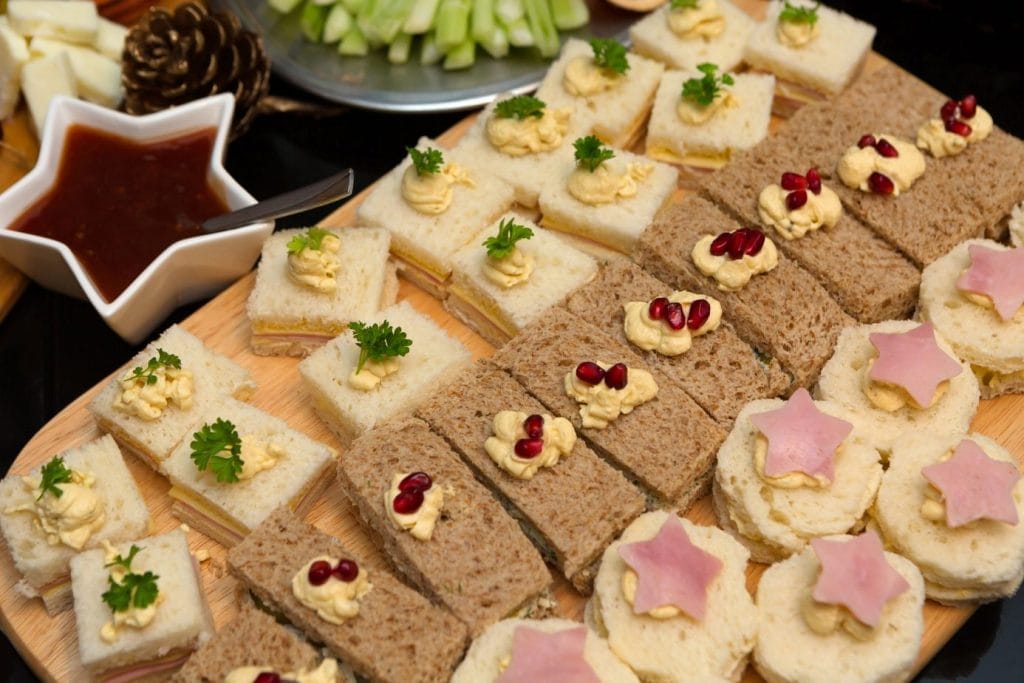
Planning Your Sandwich Charcuterie Board
Before diving into the delicious world of sandwich charcuterie boards, it's essential to lay the groundwork for a mouthwatering masterpiece. In this section, we'll explore essential tips for selecting a tantalizing array of bread, meats, cheeses, spreads, and toppings to elevate your sandwich game to new heights. Additionally, we'll delve into considerations for accommodating various dietary restrictions and preferences, ensuring that every guest can indulge in the savory delights of your carefully curated spread. Get ready to embark on a culinary journey as we map out the key steps to planning the perfect sandwich charcuterie board experience.
Tips for Selecting a Variety of Ingredients
- Bread Selection: Offer a diverse range of bread options to cater to different tastes and preferences. Include classics like sourdough, whole grain, and wheat, as well as specialty breads like ciabatta, baguettes, and wraps.
- Meats and Proteins: Provide a selection of meats to appeal to various palates, including traditional options like turkey, ham, and roast beef, as well as gourmet choices such as prosciutto, pastrami, and smoked salmon.
- Cheese Assortment: Curate an assortment of cheeses with varying flavors and textures. Include classics like cheddar, Swiss, and provolone, alongside artisanal options like brie, blue cheese, and aged gouda.
- Spread Options: Offer a variety of spreads and condiments to complement the sandwich ingredients. Consider classics like mustard, mayonnaise, and pesto, as well as specialty spreads like horseradish aioli, fig jam, and olive tapenade.
- Fresh Toppings: Incorporate an array of fresh vegetables, fruits, and herbs to add color, flavor, and crunch to the sandwiches. Include staples like lettuce, tomato, and cucumber, as well as unique options such as avocado, sprouts, and basil leaves.
Considerations for Dietary Restrictions and Preferences
- Allergies and Intolerances: Be mindful of common food allergies and intolerances, such as gluten, dairy, and nut allergies. Offer gluten-free bread options and dairy-free cheese alternatives to accommodate guests with dietary restrictions.
- Vegetarian and Vegan Options: Ensure there are plenty of vegetarian and vegan-friendly ingredients available for guests who follow plant-based diets. Include options like grilled vegetables, tofu, hummus, and dairy-free spreads to cater to diverse dietary preferences.
- Low-Carb and Keto-Friendly Choices: For guests following low-carb or keto diets, provide lettuce wraps or collard greens as alternatives to bread, along with lean protein options like grilled chicken and turkey breast.
- Customization Stations: Set up a DIY sandwich bar with separate stations for different dietary preferences, allowing guests to build their sandwiches according to their individual tastes and restrictions.
By carefully planning your sandwich charcuterie board and considering dietary restrictions and preferences, you can ensure that all guests can enjoy a delicious and satisfying meal tailored to their needs.
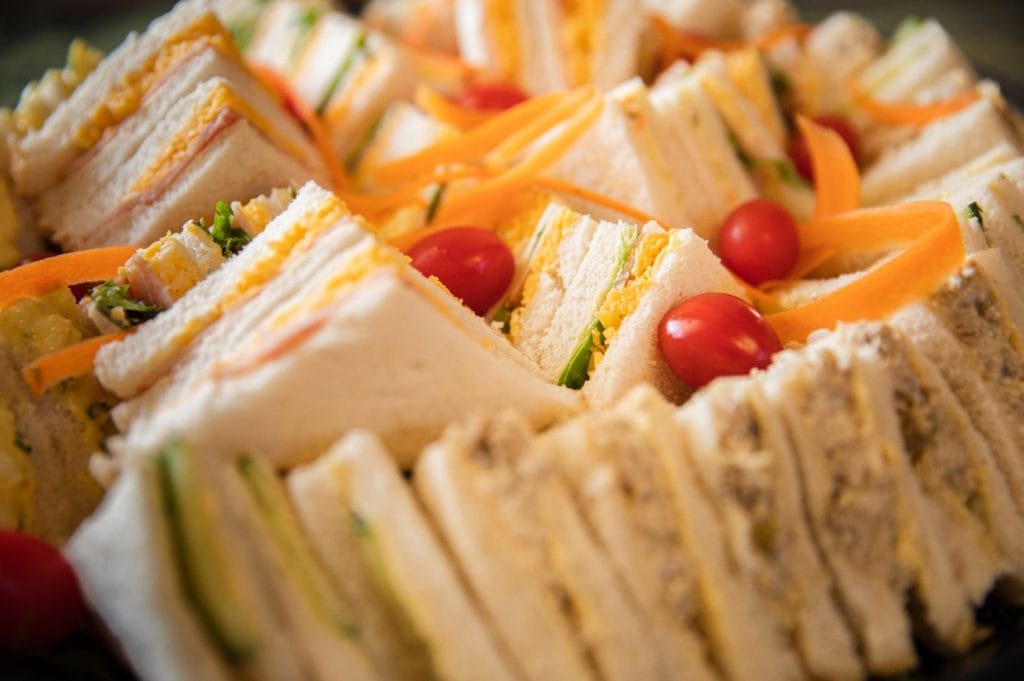
Building the Perfect Sandwich Charcuterie Board
Now that you've meticulously planned your sandwich charcuterie board, it's time to bring your vision to life. In this section, we'll walk through the step-by-step process of assembling a visually stunning and deliciously satisfying board that will delight your taste buds and impress your guests.
Step-by-Step Guide to Assembling the Board
- Prepare Your Ingredients: Start by arranging all your chosen ingredients in separate bowls or containers for easy access. Slice the bread, meats, and cheeses, and portion out the spreads and toppings.
- Select Your Serving Platter: Choose a large, flat platter or board as the foundation for your sandwich charcuterie masterpiece. Opt for a wooden board, marble slab, or decorative serving tray to enhance the presentation.
- Arrange the Bread: Begin by placing the bread slices or rolls in a visually appealing pattern on the serving platter. Consider alternating different types of bread for added variety and visual interest.
- Layer the Meats and Cheeses: Arrange the sliced meats and cheeses in overlapping layers on top of the bread. Create a balanced distribution of flavors and textures, ensuring each bite offers a harmonious blend of ingredients.
- Add Spreads and Condiments: Using small bowls or ramekins, present the spreads and condiments alongside the meats and cheeses. Provide spreaders or knives for guests to customize their sandwiches according to their preferences.
Suggestions for Layout and Arrangement
- Symmetry vs. Asymmetry: Experiment with both symmetrical and asymmetrical arrangements to create visual appeal. Consider placing ingredients in rows, clusters, or concentric circles for a dynamic presentation.
- Color Coordination: Arrange ingredients with contrasting colors to create a vibrant and eye-catching display. Incorporate colorful fruits, vegetables, and garnishes to add pops of color to the board.
- Height Variation: Play with height and elevation by stacking ingredients or using tiered serving stands to add dimension to the board. This adds visual interest and makes it easier for guests to reach all the components.
Creative Ways to Incorporate Garnishes and Decorative Elements
- Fresh Herbs and Edible Flowers: Garnish the board with sprigs of fresh herbs such as rosemary, thyme, or basil, and edible flowers like nasturtiums or pansies for a touch of elegance and fragrance.
- Citrus Slices and Zest: Introduce citrus slices or zest to add brightness and acidity to the board. Lemon or orange slices can also serve as decorative accents that complement the flavors of the sandwiches.
- Nuts and Seeds: Sprinkle toasted nuts or seeds, such as almonds, walnuts, or sesame seeds, over the board for added texture and crunch. Consider candied nuts for a sweet contrast to savory flavors.
By following these steps and incorporating creative layout and garnishing techniques, you'll be well on your way to building a sandwich charcuterie board that not only looks stunning but also delights the senses with its delectable flavors and textures.
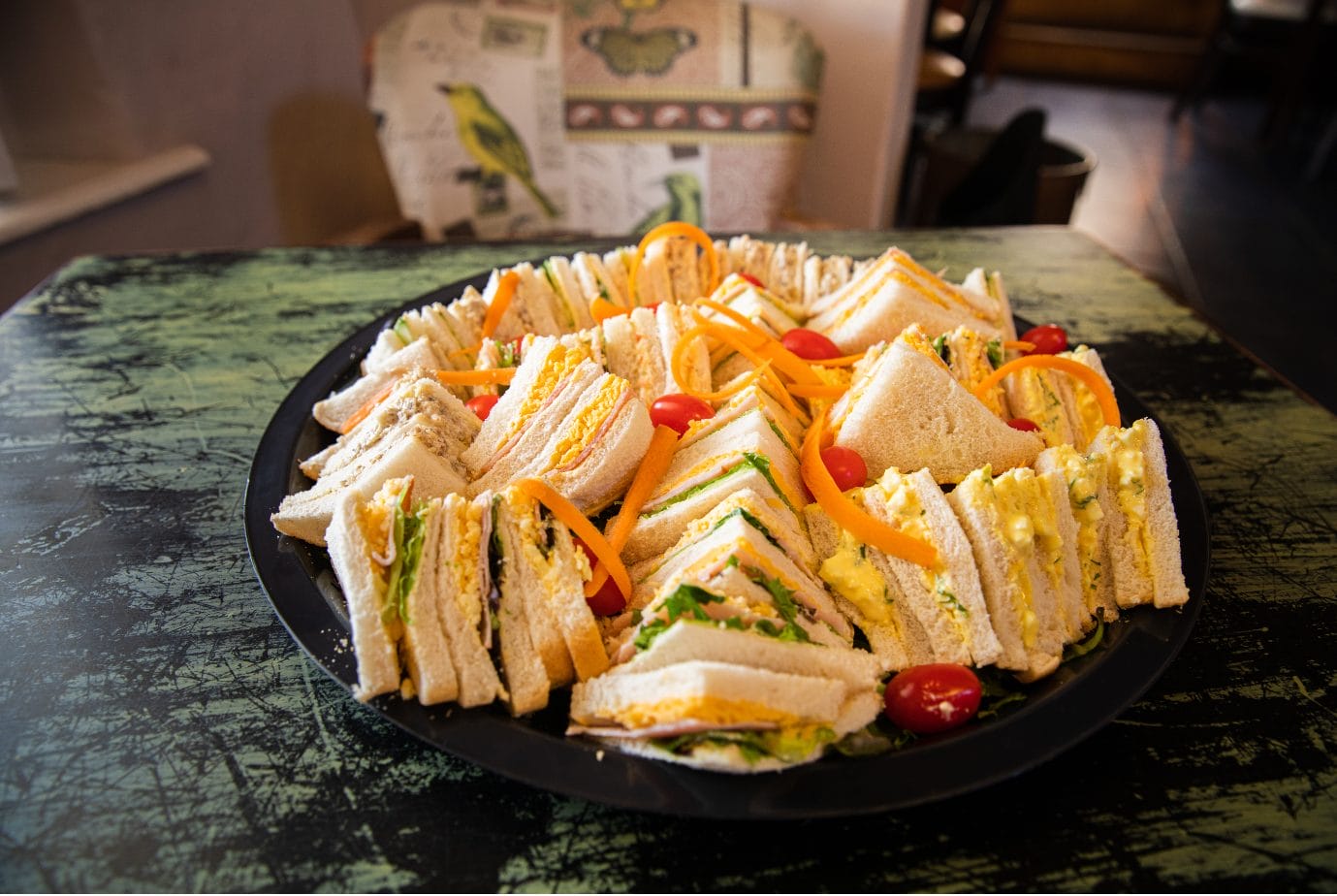
Types of Sandwich Charcuterie Boards
As we continue our exploration of sandwich charcuterie boards, let's journey through a world of culinary diversity and flavor innovation. In this section, we'll discover the wide range of options available for creating sandwich charcuterie boards, from traditional favorites to international inspirations and plant-based alternatives.
Traditional Favorites: Classic Deli Meats and Cheeses
- Description: Embrace the timeless charm of classic deli sandwiches with a sandwich charcuterie board featuring traditional favorites like roast beef, turkey breast, ham, and salami, paired with classic deli cheeses such as cheddar, Swiss, provolone, and American.
- Tips for Selection: Opt for high-quality, thinly sliced deli meats and cheeses for optimal flavor and texture. Consider incorporating condiments like mustard, mayonnaise, and pickles to enhance the authenticity of the deli experience.
International Flair: Global-Inspired Ingredients and Flavors
- Description: Transport your taste buds around the world with a sandwich charcuterie board inspired by international cuisines and flavors. Explore diverse combinations such as Italian-inspired paninis with prosciutto, mozzarella, and pesto, or Mediterranean-inspired wraps with falafel, hummus, and tzatziki.
- Tips for Selection: Research traditional ingredients and flavor profiles from various cuisines to create authentic international sandwiches. Experiment with unique spices, herbs, and condiments to capture the essence of each culinary tradition.
Vegetarian and Vegan Options: Plant-Based Alternatives and Substitutions
- Description: Cater to vegetarian and vegan preferences with a sandwich charcuterie board featuring an array of plant-based alternatives and substitutions. Offer options like grilled vegetable paninis, tofu banh mi, and dairy-free cheeses, along with an assortment of fresh vegetables and flavorful spreads.
- Tips for Selection: Choose a variety of colorful and flavorful vegetables to showcase the diversity of vegetarian and vegan options. Consider incorporating protein-rich ingredients like chickpeas, lentils, and tempeh to create hearty and satisfying sandwiches.
By exploring the different types of sandwich charcuterie boards, you can unlock a world of culinary creativity and innovation, offering something to satisfy every palate and preference. Whether you prefer classic deli sandwiches, crave exotic international flavors, or opt for plant-based alternatives, there's a sandwich charcuterie board to suit every taste and occasion.

Serving and Presentation
Now that your sandwich charcuterie board is meticulously crafted, it's time to showcase your culinary masterpiece with flair. In this section, we'll explore essential tips for serving your sandwich charcuterie board at gatherings or events, along with creative ideas for accompanying beverages and sides. Additionally, we'll delve into suggestions for styling and photographing your creation for social media, ensuring that your sandwich charcuterie board receives the attention it deserves.
Tips for Serving Your Sandwich Charcuterie Board
- Location: Choose a central location for your sandwich charcuterie board, ensuring easy access for guests to assemble their sandwiches. Place the board on a stable surface, such as a kitchen island or dining table, where it can be easily reached from all sides.
- Utensils and Serveware: Provide a variety of utensils and serveware, including spreaders, knives, tongs, and small plates, to facilitate the serving process. Consider placing napkins and wet wipes nearby for guests to clean their hands between bites.
- Labeling: Label each component of the sandwich charcuterie board with small signs or labels to help guests identify the ingredients and make informed choices. Include any pertinent information, such as dietary restrictions or allergen warnings, to ensure the safety of all guests.
Ideas for Accompanying Beverages and Sides
- Beverage Pairings: Pair your sandwich charcuterie board with a selection of beverages that complement the flavors and textures of the sandwiches. Offer options such as sparkling water, lemonade, iced tea, or refreshing cocktails for a well-rounded dining experience.
- Side Dishes: Enhance your sandwich charcuterie board with a variety of side dishes and accompaniments. Consider serving fresh salads, fruit platters, chips, or crackers to provide additional options for guests to enjoy alongside their sandwiches.
By following these tips for serving and presenting your sandwich charcuterie board, as well as incorporating creative ideas for accompanying beverages and sides, you can create an unforgettable dining experience that will impress your guests and leave them eager to share their experience on social media.
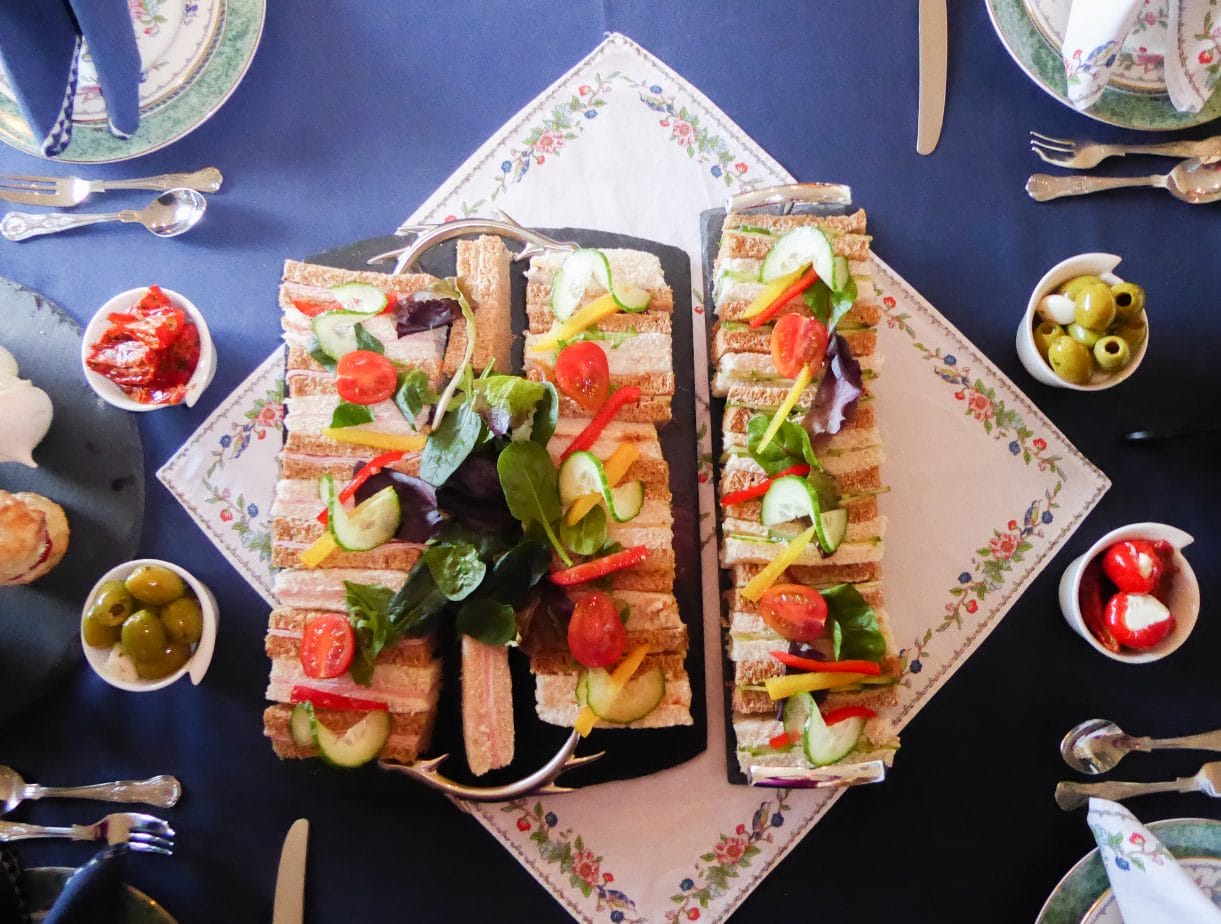
Recipes and Inspiration
In this section, we'll dive into the heart of sandwich charcuterie board creation, exploring a plethora of tantalizing recipes and inspirational ideas to spark your culinary imagination. Whether you're planning a casual lunch, a festive gathering, or a themed event, these recipes and suggestions will help you craft standout sandwiches and themed boards that are sure to impress your guests and elevate your dining experience.
Sample Recipes for Standout Sandwiches
- Caprese Panini: Layer slices of fresh mozzarella, ripe tomatoes, and basil leaves between slices of ciabatta bread. Grill until golden and crispy, then drizzle with balsamic glaze for a classic Caprese-inspired panini.
- Smoked Salmon Bagel: Spread cream cheese on a toasted bagel and top with thinly sliced smoked salmon, red onion, capers, and fresh dill. Serve open-faced for an elegant twist on the classic bagel and lox.
- Mediterranean Wrap: Fill a large tortilla with grilled chicken, hummus, diced cucumbers, cherry tomatoes, kalamata olives, and feta cheese. Roll tightly and slice into pinwheels for a flavorful Mediterranean-inspired wrap.
Inspirational Ideas for Themed Boards
- Italian Feast: Create an Italian-inspired sandwich charcuterie board featuring classic flavors like prosciutto, mozzarella, sun-dried tomatoes, and arugula. Serve alongside a selection of Italian antipasti such as olives, artichoke hearts, and marinated vegetables.
- Summer Picnic: Design a summer-themed board with light and refreshing sandwiches perfect for a picnic in the park. Include options like turkey and avocado wraps, cucumber tea sandwiches, and grilled vegetable paninis. Pair with chilled lemonade or iced tea for a quintessential summer dining experience.
- Holiday Celebration: Celebrate the holidays with a festive sandwich charcuterie board featuring seasonal flavors and ingredients. Offer options like cranberry turkey sandwiches, roasted vegetable sliders, and ham and brie croissants. Serve alongside holiday-inspired sides like cranberry sauce, sweet potato chips, and spiced nuts.
Recommendations for Experimenting with Unique Flavor Combinations
- Sweet and Savory: Experiment with sweet and savory flavor combinations by incorporating ingredients like fig jam, honey mustard, or apple slices into your sandwiches. These unexpected additions add depth and complexity to the flavor profile.
- Global Fusion: Get creative by fusing flavors from different cuisines to create unique and exciting sandwich combinations. Consider mixing Asian-inspired ingredients like teriyaki chicken with Mexican flavors like guacamole and salsa for a fusion masterpiece.
- Texture Play: Play with texture by incorporating crunchy elements like crispy bacon, toasted nuts, or kettle chips into your sandwiches. The contrast between creamy, crunchy, and chewy components adds excitement and interest to each bite.
With these sample recipes, inspirational ideas, and recommendations for experimenting with unique flavor combinations, you'll be well-equipped to craft standout sandwiches and themed boards that will dazzle your guests and leave them craving more.
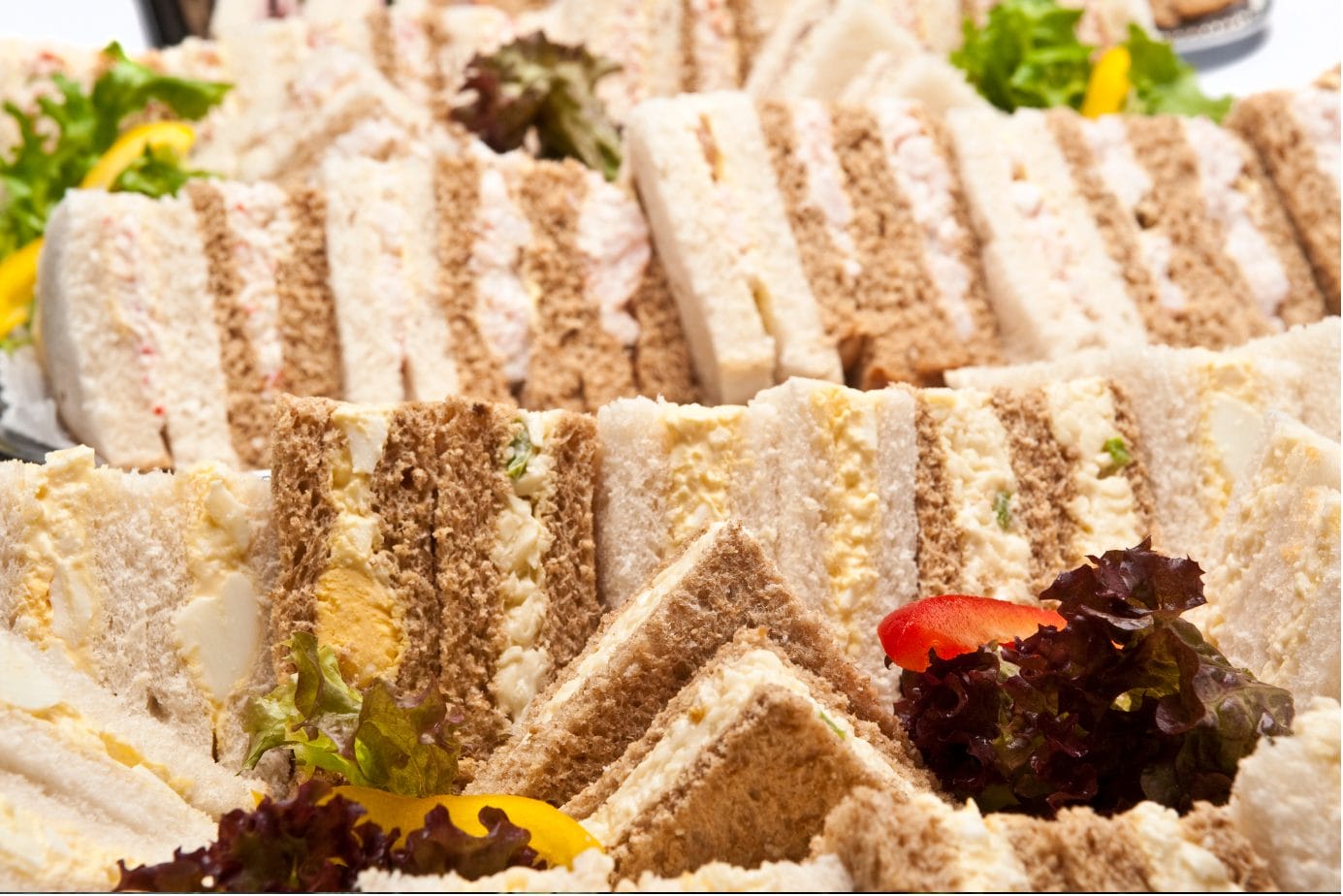
Wrapping It Up
As you embark on your own sandwich charcuterie board journey, don't be afraid to get creative and experiment with different flavor combinations, themes, and presentations. Whether you're a seasoned chef or a novice home cook, the beauty of sandwich charcuterie boards is that there are no rules – only endless opportunities to express your culinary creativity and showcase your unique tastes and preferences. So go ahead, mix and match ingredients, play with textures and flavors, and let your imagination run wild as you create your own masterpiece.
In conclusion, sandwich charcuterie boards offer a delightful and satisfying dining experience that celebrates the art of culinary creativity and the joy of sharing delicious food with loved ones. So go ahead, gather your ingredients, assemble your board, and let the magic of sandwich charcuterie boards unfold. Bon appétit!
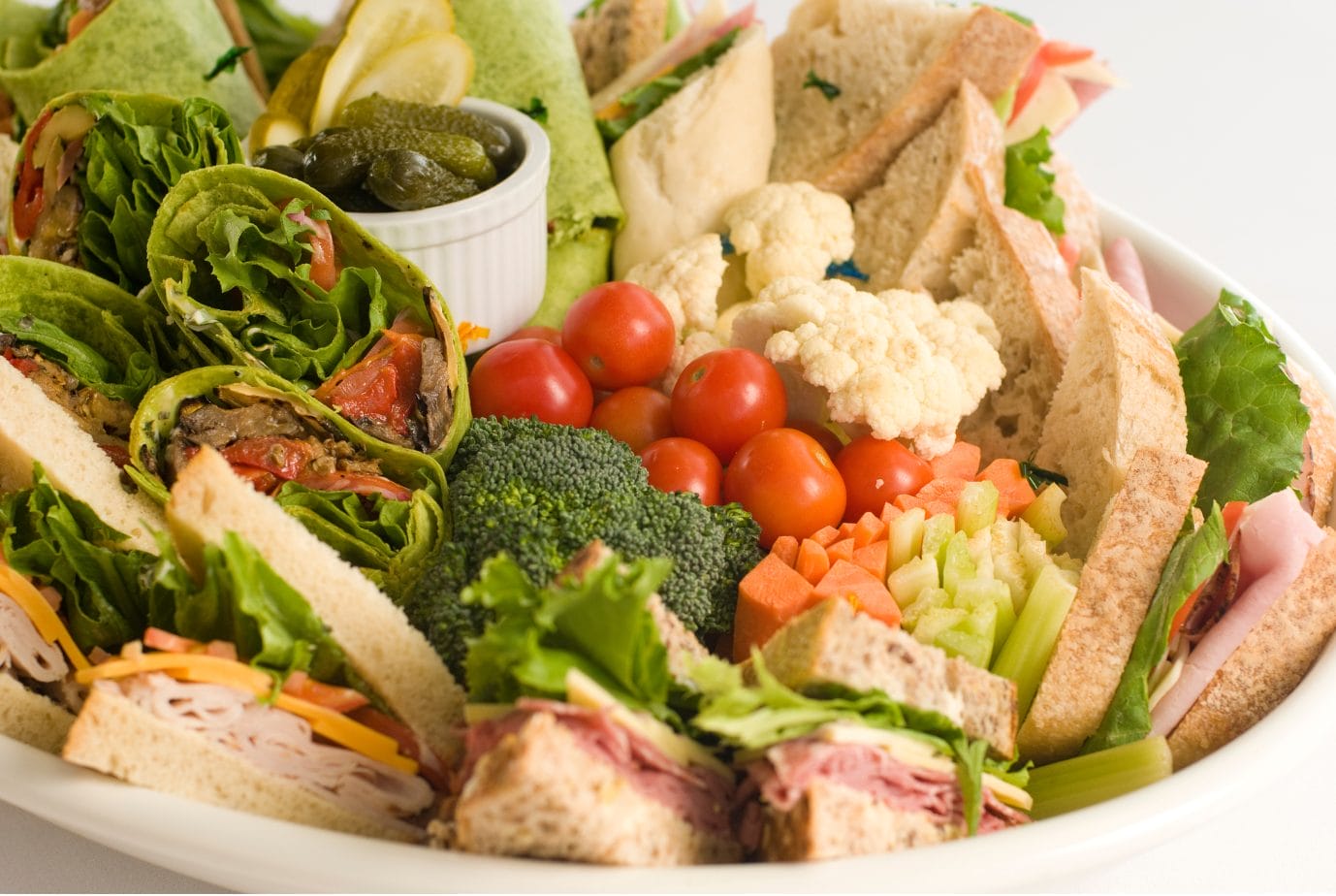
Frequently Asked Questions
What do you put on a sandwich platter?
On a sandwich platter, you typically put a variety of bread, meats, cheeses, spreads, vegetables, and condiments to create a selection of sandwiches for serving.
How do you arrange a sandwich board?
Arrange a sandwich board by placing a variety of bread, meats, cheeses, spreads, and toppings in an appealing layout, ensuring easy access for assembling sandwiches.
What goes on a sandwich bar?
A sandwich bar typically includes a variety of bread options (sliced bread, rolls, wraps), assorted meats (such as turkey, ham, roast beef), cheeses (cheddar, Swiss, provolone), various spreads (mayonnaise, mustard, hummus), fresh vegetables (lettuce, tomato, onion), and additional toppings (pickles, olives, peppers).
Share Your Creations:
We’d love to see the charcuterie boards you create using our guide! Feel free to share your own creations in the comments or on social media, and tag us for a chance to be featured. And if you have any other ideas or tips for creating the perfect charcuterie board, we’d love to hear them.







